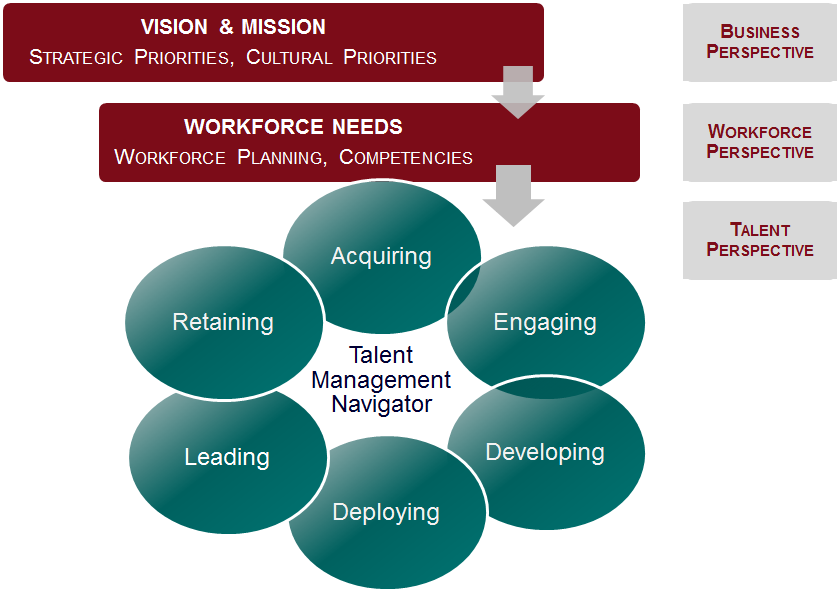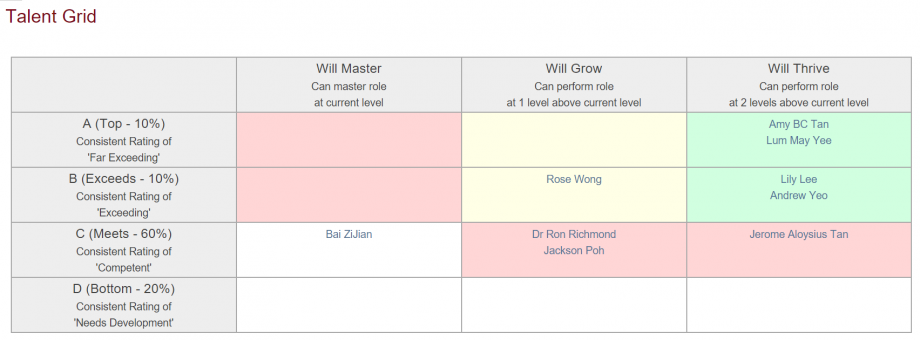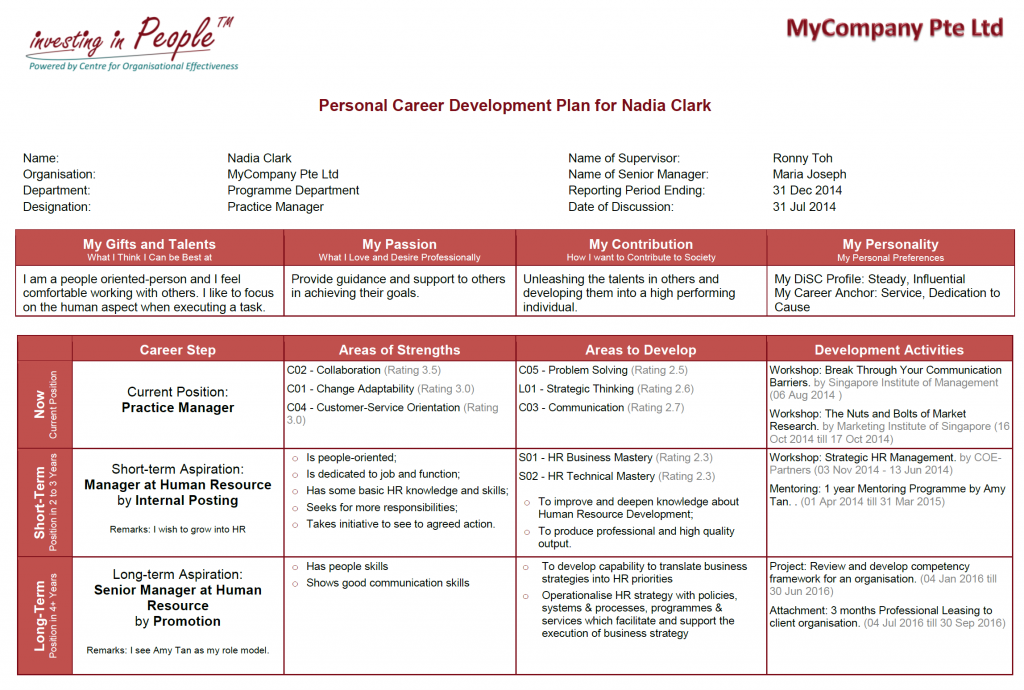Recently, I had coffee with Edward, an old friend – or better: one of my mentors. He is approaching seventy and yet is in the pink of health. So I asked whether he plays golf 24/7. His response came a bit as a surprise.
“My company still needs me – so I am re-employed. Full time. This means there is not much time for golf,” he said with a sour smile.
I know he loves his job and it certainly tickles his ego knowing that he is still needed. But, I would have expected him to slow down a bit and enjoy what he has been working for all those years.
Edward explained “Well, I guess we did not really think hard enough about my succession. The guy we had in mind left to join a competitor and all the others are not ready yet. And, I am not the only one from the old guard who is facing this predicament. We would be in a much better position if we would have had a talent management program in place instead of just talking about it from time to time. Not only would we have my designated successor still on board, we would also have made better hiring decisions. The people we hired are good in what they do. However, they don’t seem to have the potential to move up. We have hired for today without having tomorrow in mind.”
Edward’s case is not an exception. It rather re-emphasises a well-known observation across many industries: Talent management and hence succession planning are often underdeveloped. Even if there is a well thought-through talent management program on paper, lack of leadership and therefore absence of involvement of critical players prevents it from working for the organisation.
Following a research conducted in 2008 by DDI, 55% of executive-level respondents indicated their firms’ performance was likely or very likely to suffer in the near future due to insufficient leadership talent (Development Dimensions International (DDI) in cooperation with The Economist Intelligence Unit, 2008).
An IBM study conducted in 2008 found that public companies who have a more effective talent management program in place are more likely to outperform similar sized-companies with less effective talent management (IBM Institute for Business Value, 2008). There are a multitude of studies showing similar patterns: An effective talent management program does indeed drive business results!
Effective talent management ensures the availability of staff with the right competencies (knowledge, skills, experience and attitude) to support and respond to an organisation’s present and future requirements in a systematic way. Any organisation that wants to achieve a greater market share must work diligently to find the best people and align the workforce with the strategic goals of the organisation. To do so, it requires an integrated approach and a talent management program.

An Integrated talent management program provides an efficient way to manage all the phases of human life-cycle. It helps you to recruit the best people and manage their performance to achieve the specific goals. It focuses on developing and deploying the right people to the right jobs. It enables you to consistently reward performance and retain the top performers. It assists with succession planning to maintain business continuity and it helps in communicating and engaging with employees about benefits to maintain a happy and healthy workforce.
In the case of Edward’s organisation, rather than focusing on recruiting and retaining only to ensure having the right persons for the key positions, more emphasis could have been put in to integrate recruitment to developing, deploying and leading employees for the future jobs. It is about managing employees’ desire for better work-life balance and meaningful jobs, and building the “muscles” for the organisation. Here are some recommendations for an integrated talent management program:
1. Recruit for the Future

For many recruitments, it is advantageous to think beyond the current position you are recruiting for. Which position could this person take on in future? Would this be aligned with the strategy of the organisation? Recruiting the right mind-set is more important than the right skills. Knowledge and skills can be attained if someone has the right mind-set to learning and growing, whereas building the mind-set seems nearly impossible (Tan, 2010).
When Jack Welch was asked how he ensured best in class products and highest customer satisfaction, he answered he focussed on identifying, attracting, developing and motivating the best people and he would never need to worry about customers and products at all.
2. Build a Succession Pipeline
Effective Succession Planning means having more than one successor for critical positions. Like in Edward’s organisation, there will always be changes in the talent pool as well as in the strategy. These changes require a certain degree of flexibility that can only be achieved if the talent pool is larger than the number of positions that need to be filled. This enables you to select the best for the position at hand instead the only one available (Figure 2).
3. Know the Readiness of Your Talent

Succession Planning usually involves a customised set of development activities needed to get the successors ready to the new role. These development activities are of a longer-term character than development activities for the current job. Often they spread over a few years. Therefore, it is not easy to track the development of successors by applying the normal training and development framework used by HR professionals. In addition to the current performance and the completion of development activities, information about a person’s potential is necessary to give a full picture about the readiness of the talent. This information can be compiled in a talent grid (Figure 3).
4. Instil a Coaching Culture for Talent Management
Managers need to be empowered and trained to hold frequent career dialogues with their staff. Firstly, this is what more and more employees demand. They wish to know what their opportunities within the organisation are. An organisation’s attractiveness to job seekers and its chance of retaining its employees depends, amongst others, on its ability to show career opportunities and potential career paths. Secondly, career development coaching dialogues build trust on the one hand and they are a sign of trust on the other hand. If this trust exists, less surprising career moves may occur. Thirdly, career development coaching dialogues are an effective way of managing the pool of talent. During these dialogues, managers may receive valuable information about career aspirations of their staff and whether these match with organisational goals. It is a discussion of opportunities without promising too much.
During the coaching dialogue, development needs for current, short-term and long-term positions may be discussed. At the end, personal development actions such as workshops, e-learnings, learning through audio/video resources, learning by doing, coaching, mentoring, project work, attachments or committee assignments etc. have to be considered and documented (Figure 4) (Kaufmann, 2014).

Conclusion
The business environment has become more complex and dynamic over the last decade. Emerging technologies are changing the competencies needed for the organisations. Additionally, employees’ expectations have shifted towards growing in their profession instead of loyalty to the organisation. And, they are increasingly interested in long-term career planning (Wellins, Smith, & Erker, 2006). These trends force organisations to place more emphasis on the talent management program. Organisations will lose out in the market if they don’t do so.
If Edward’s organisation would have done so, he could have sidestepped and made space for the next generation leader whom he could be supporting in an advisory role instead of running operations. Which might also imply that he would be seen more often on the golf course.
Bibliography
Development Dimensions International (DDI) in cooperation with The Economist Intelligence Unit. (2008). Growing global executive talent: High priority, limited progress. Pittsburgh, PA, USA.
IBM Institute for Business Value. (2008). Integrated talent management part 1: Understanding the opportunities for success.
Kaufmann, U. H. (2014, 8 15). Navigating Your Career Aspirations.
Tan, A. B. (2010, dec 01). Recruiting the Right Mindset.
Wellins, S. E. (2006). Nine Best Practices of Effective Talent Management. Retrieved from DDI Resources: http://www.ddiworld.com/resources/library/white-papers-monographs/nine-best-practices-of-effective-talent-management


